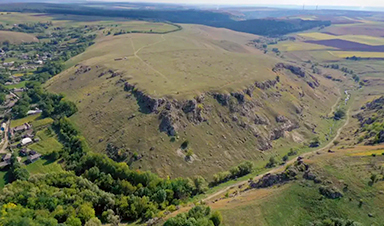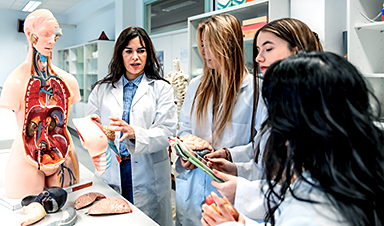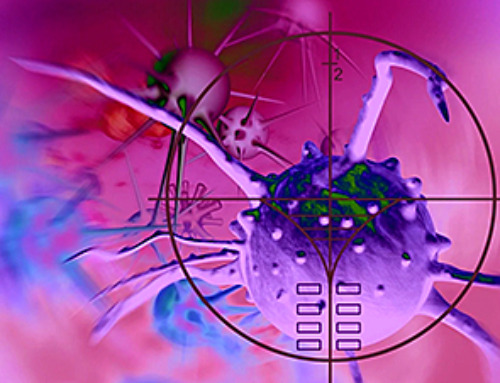Social distancing may have roots 6,000 years ago, as research shows Neolithic villages like Nebelivka used clustered layouts to control disease spread.
The phrase “social distancing” became widely recognized in recent years as people worldwide adapted their behavior to combat the COVID pandemic. However, new research led by UT Professor Alex Bentley suggests that the concept of maintaining organized physical distance may trace back roughly 6,000 years.
Bentley, from the Department of Anthropology, published a recent study in the Journal of The Royal Society Interface. His coauthors include Simon Carrignon, a former UT postdoctoral researcher who was a research associate at the Cambridge University’s McDonald Institute for Archaeological Research while working on this project.
“New ancient DNA studies have shown that diseases such as salmonella, tuberculosis, and plague emerged in Europe and Central Asia thousands of years ago during the Neolithic Era, which is the time of the first farming villages,” said Bentley. “This led us to ask a new question, which is whether Neolithic villagers practiced social distancing to help avoid the spread of these diseases.”
Urban Planning Over the Centuries
As computational social scientists, Bentley and Carrignon have published on both ancient adaptive behaviors and the spread of disease in the modern world. This project brought these interests together. They found that the “mega-settlements” of the ancient Trypillia culture in the Black Sea region, circa 4,000 BC, were a perfect place to test their theory that boundaries of personal space have long been integral parts of public health planning.
They focused on a settlement called Nebelivka, in what is now Ukraine, where thousands of wooden homes were regularly spaced in concentric patterns and clustered in neighborhoods.
“This clustered layout is known by epidemiologists to be a good configuration to contain disease outbreaks,” said Bentley. “This suggests and helps explain the curious layout of the world’s first urban areas—it would have protected residents from emerging diseases of the time. We set out to test how effective it would be through computer modeling.”
Carrignon and Bentley adapted models developed in a previous National Science Foundation-funded project at UT. Bentley was co-investigator with research lead Professor Nina Fefferman in this work modeling the effects of social distancing behaviors on the spread of Covid-like pandemics to study what effects these practices—such as reducing interaction between neighborhoods—might have had on prehistoric settlements.
“These new tools can help us understand what the archaeological record is telling us about prehistoric behaviors when new diseases evolved,” said Bentley. “The principles are the same—we assumed the earliest prehistoric diseases were foodborne at first, rather than airborne.”
Following the Trail
Their current study simulated the spread of foodborne disease, such as ancient salmonella, on the detailed plan of Nebelivka.
They teamed with:
- John Chapman and Bisserka Gaydarska, archaeologists from England’s Durham University, who excavated Nebelivka;
- Brian Buchanan, a researcher at Eastern Washington University researcher who did a detailed digital map of the site;
- and Mike O’Brien, a cultural evolution expert from Texas A&M in San Antonio.
They ran the archeological data through millions of simulations to test the effects of different possible disease parameters.
“The results revealed that the pie-shaped clustering of houses at Nebelivka, in distinct neighborhoods, would have reduced the spread of early foodborne diseases,” said Bentley. “Fighting disease might also explain why the residents of Nebelivka regularly burned their wooden houses to replace them with new ones. The study shows that neighborhood clustering would have helped survival in early farming villages as new foodborne diseases evolved.”
Applications for Today
With their success in modeling from sparse archaeological data, this approach could be applied to contemporary and future situations when disease data are sparse, even for airborne illnesses.
“In the early 2020 days of the Covid epidemic, for example, few US counties were reporting reliable infection statistics,” said Bentley. “By running millions of simulations with different parameter values, this approach—known as ‘Approximate Bayesian Computation’—can be applied to test different models versus contemporary disease data, such as infection numbers in US counties over time.”
The team’s mix of ancient solutions and modern applications exemplifies the innovative approaches that Volunteer researchers in the College of Arts and Sciences bring to making lives better for Tennesseans and beyond.
Reference: “Modelling cultural responses to disease spread in Neolithic Trypillia mega-settlements” by R. Alexander Bentley, Simon Carrignon, Bisserka Gaydarska, John Chapman, Brian Buchanan and Michael J. O’Brien, 30 September 2024, Journal of the Royal Society Interface.
DOI: 10.1098/rsif.2024.0313
News
Repurposed drugs could calm the immune system’s response to nanomedicine
An international study led by researchers at the University of Colorado Anschutz Medical Campus has identified a promising strategy to enhance the safety of nanomedicines, advanced therapies often used in cancer and vaccine treatments, [...]
Nano-Enhanced Hydrogel Strategies for Cartilage Repair
A recent article in Engineering describes the development of a protein-based nanocomposite hydrogel designed to deliver two therapeutic agents—dexamethasone (Dex) and kartogenin (KGN)—to support cartilage repair. The hydrogel is engineered to modulate immune responses and promote [...]
New Cancer Drug Blocks Tumors Without Debilitating Side Effects
A new drug targets RAS-PI3Kα pathways without harmful side effects. It was developed using high-performance computing and AI. A new cancer drug candidate, developed through a collaboration between Lawrence Livermore National Laboratory (LLNL), BridgeBio Oncology [...]
Scientists Are Pretty Close to Replicating the First Thing That Ever Lived
For 400 million years, a leading hypothesis claims, Earth was an “RNA World,” meaning that life must’ve first replicated from RNA before the arrival of proteins and DNA. Unfortunately, scientists have failed to find [...]
Why ‘Peniaphobia’ Is Exploding Among Young People (And Why We Should Be Concerned)
An insidious illness is taking hold among a growing proportion of young people. Little known to the general public, peniaphobia—the fear of becoming poor—is gaining ground among teens and young adults. Discover the causes [...]
Team finds flawed data in recent study relevant to coronavirus antiviral development
The COVID pandemic illustrated how urgently we need antiviral medications capable of treating coronavirus infections. To aid this effort, researchers quickly homed in on part of SARS-CoV-2's molecular structure known as the NiRAN domain—an [...]
Drug-Coated Neural Implants Reduce Immune Rejection
Summary: A new study shows that coating neural prosthetic implants with the anti-inflammatory drug dexamethasone helps reduce the body’s immune response and scar tissue formation. This strategy enhances the long-term performance and stability of electrodes [...]
Scientists discover cancer-fighting bacteria that ‘soak up’ forever chemicals in the body
A family of healthy bacteria may help 'soak up' toxic forever chemicals in the body, warding off their cancerous effects. Forever chemicals, also known as PFAS (per- and polyfluoroalkyl substances), are toxic chemicals that [...]
Johns Hopkins Researchers Uncover a New Way To Kill Cancer Cells
A new study reveals that blocking ribosomal RNA production rewires cancer cell behavior and could help treat genetically unstable tumors. Researchers at the Johns Hopkins Kimmel Cancer Center and the Department of Radiation Oncology and Molecular [...]
AI matches doctors in mapping lung tumors for radiation therapy
In radiation therapy, precision can save lives. Oncologists must carefully map the size and location of a tumor before delivering high-dose radiation to destroy cancer cells while sparing healthy tissue. But this process, called [...]
Scientists Finally “See” Key Protein That Controls Inflammation
Researchers used advanced microscopy to uncover important protein structures. For the first time, two important protein structures in the human body are being visualized, thanks in part to cutting-edge technology at the University of [...]
AI tool detects 9 types of dementia from a single brain scan
Mayo Clinic researchers have developed a new artificial intelligence (AI) tool that helps clinicians identify brain activity patterns linked to nine types of dementia, including Alzheimer's disease, using a single, widely available scan—a transformative [...]
Is plastic packaging putting more than just food on your plate?
New research reveals that common food packaging and utensils can shed microscopic plastics into our food, prompting urgent calls for stricter testing and updated regulations to protect public health. Beyond microplastics: The analysis intentionally [...]
Aging Spreads Through the Bloodstream
Summary: New research reveals that aging isn’t just a local cellular process—it can spread throughout the body via the bloodstream. A redox-sensitive protein called ReHMGB1, secreted by senescent cells, was found to trigger aging features [...]
AI and nanomedicine find rare biomarkers for prostrate cancer and atherosclerosis
Imagine a stadium packed with 75,000 fans, all wearing green and white jerseys—except one person in a solid green shirt. Finding that person would be tough. That's how hard it is for scientists to [...]
Are Pesticides Breeding the Next Pandemic? Experts Warn of Fungal Superbugs
Fungicides used in agriculture have been linked to an increase in resistance to antifungal drugs in both humans and animals. Fungal infections are on the rise, and two UC Davis infectious disease experts, Dr. George Thompson [...]





















